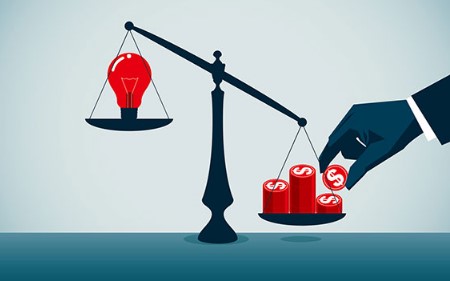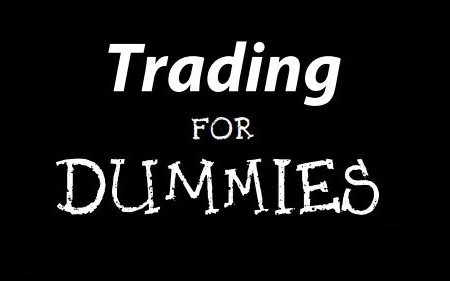The leverage effect to finance the creation of your business
 08 / 02 / 23
Visitors: 1189
08 / 02 / 23
Visitors: 1189
In an LBO, the leverage effect is used in accounting to express the positive or negative effect that leveraged or borrowed capital may have on a company's return on equity.
Thus, when an investment is more profitable than the amount of debt needed to repay it, leverage works in favor of investors, increasing their return on equity.
However, be careful and careful in your calculations, because the leverage effect works both ways, and therefore can increase the weight of the investment for the entrepreneur.
HOW DOES LEVERAGE WORK IN INVESTING OR LBO?
The leverage effect, called leverage in the U.S., is a fairly simple mechanism whose measurement examines the feasibility of taking debt to make an investment.
It examines the expected return between the costs associated with an investment and the expected (or real) return on investment. The term LBO refers to a financing operation by attracting investment from outside.
Consider the example of a company financed solely with equity, with a return on investment of 10%. If it wants to grow through an LBO by taking out a loan at 6% and manages to maintain its profitability level.
Shareholders will automatically benefit from the increase in profitability, which will occur due to the difference between the cost of investments made (6%) and their profitability (10%), this is the effect of leverage.
The use of credit allows you to avoid a new investment of capital, thereby increasing existing equity.
However, be careful and careful in your calculations, because the leverage effect works both ways, and therefore can increase the "burden" of investment for the entrepreneur.
HOW DOES LEVERAGE WORK IN INVESTING OR LBO?
The leverage effect, called leverage in the U.S., is a fairly simple mechanism whose measurement examines the feasibility of taking debt to make an investment.
It examines the expected return between the costs associated with an investment and the expected (or real) return on investment. The term LBO refers to a financing operation by attracting investment from outside.
Consider the example of a company financed solely with equity, which has a return on investment of 10%. If it wants to grow through an LBO by taking out a loan at 6% and manages to maintain its profitability level.
Shareholders will automatically benefit from increased profitability, which will occur due to the difference between the cost of the investments made (6%) and their profitability (10%), this is the effect of leverage.
The use of credit allows you to avoid a new investment of capital, thereby increasing existing equity.
HOW TO MEASURE DEBT IN AN LBO?
In LBO, leverage is measured by calculating the ratio between the return on investment with external financial support and the return on investment without capital.
Example 1: positive leverage
If we take the case where an investment of 100 euros yields 10 euros, the return on investment is 10%. If the project is fully financed with equity, the return on investment is 10%,
If 60% of the investment is financed by a loan at 5%, the company will pay 3 euros in interest. The result of the company will be 8 euros (10 euros minus the interest (= 3 euros) plus a decrease of 1/3 corporate tax due to interest (1 euro)). Then the return will be 8 euros / 40 euros of invested capital, i.e. 20%.
Thus, the leverage effect is 2 (20% / 10%), which means that in our example the return on leveraged capital is twice as high as that invested without leverage.
Example 2: negative leverage
If we go back to our example with a real return of 2%, we see
With 100% equity financing, the return is 2%.
In the case of 60% equity financing with 5% leverage, the company's result would be -1€. Then the return will be -1€ / 40€ or -2.5%.
The leverage effect here is negative, it is -2.5 / 2 = -1.25.
Tip:
Whatever the conditions under which investments are made, no one can predict the future, so investments are always a risk for the investor (who receives the reward in the form of interest).
Tools to limit risk do exist:
- Forecasting
- A study of the investment or business creation project (business plan, business model, etc.) and the project manager (resume, reputation, etc.)
And, of course, common sense, miracle investments do not exist.
HOW TO USE AN LBO (OR LEVERAGE) TO BUY A COMPANY?
An LBO allows a promoter or investor to gain control of a company by financing part of the transaction by borrowing money. The buyer hopes to repay the loan with the profits to be made by the acquired company.
The legal structure of an LBO
In an LBO or investment, is leverage always positive? To take advantage of leverage in an LBO, the buyer must create a holding company that will receive a contribution and take a loan. After raising the financing, the holding company acquires stock in the target company.
Doing business through a holding company has several advantages:
- It makes the acquisition transaction open to multiple buyers,
- It makes it easier to transfer the company,
- It allows the interest on the loan to be deducted from taxable income, in the case of tax consolidation of group income (Holding-Target),
- Taxation of holding company partners is based on a share of profits earned, not all profits earned).
Limits of an LBO
If an LBO operation allows, through the leverage effect, to take over a company, the loan taken creates additional financial pressure on the selected company for several years. This will take the form of dividends that the company will have to pay to the holding company in order for it to repay its loan.
By forcing the company to pay dividends, the LBO weakens the company financially, making it more sensitive to economic activity.
An example of a takeover of a company using the leverage effect.
A buyer wishing to take over a company worth 500,000 euros with an average annual return of 100,000 euros has 2 solutions:
Finance the takeover himself, in which case he would invest €500,000 and receive an annual return on investment of €100,000 / €500,000 = 20%.
Let the takeover be financed through an LBO with a loan of 350,000 euros for 7 years and annual payments of 50,000 euros. Then the personal investment will be 150,000 euros, and the result of the company will be 50,000 euros (100,000 - 50,000 to repay the debt). Then the annual return on investment would be 50,000 /150,000 =33.33%.
This rather simple example demonstrates the leverage effect created by an LBO. By borrowing through the holding company, the buyer reduces his investment while increasing his profit margin.
A complete list of unscrupulous brokers, that we do not recommend working with is available here.






